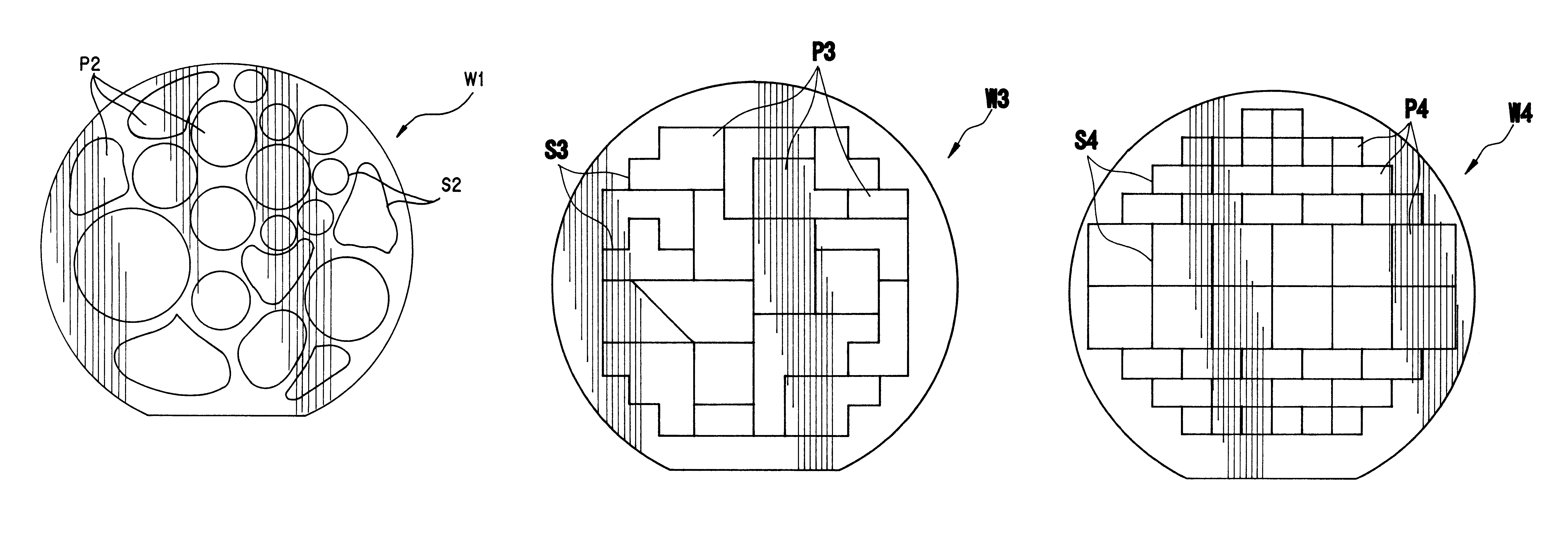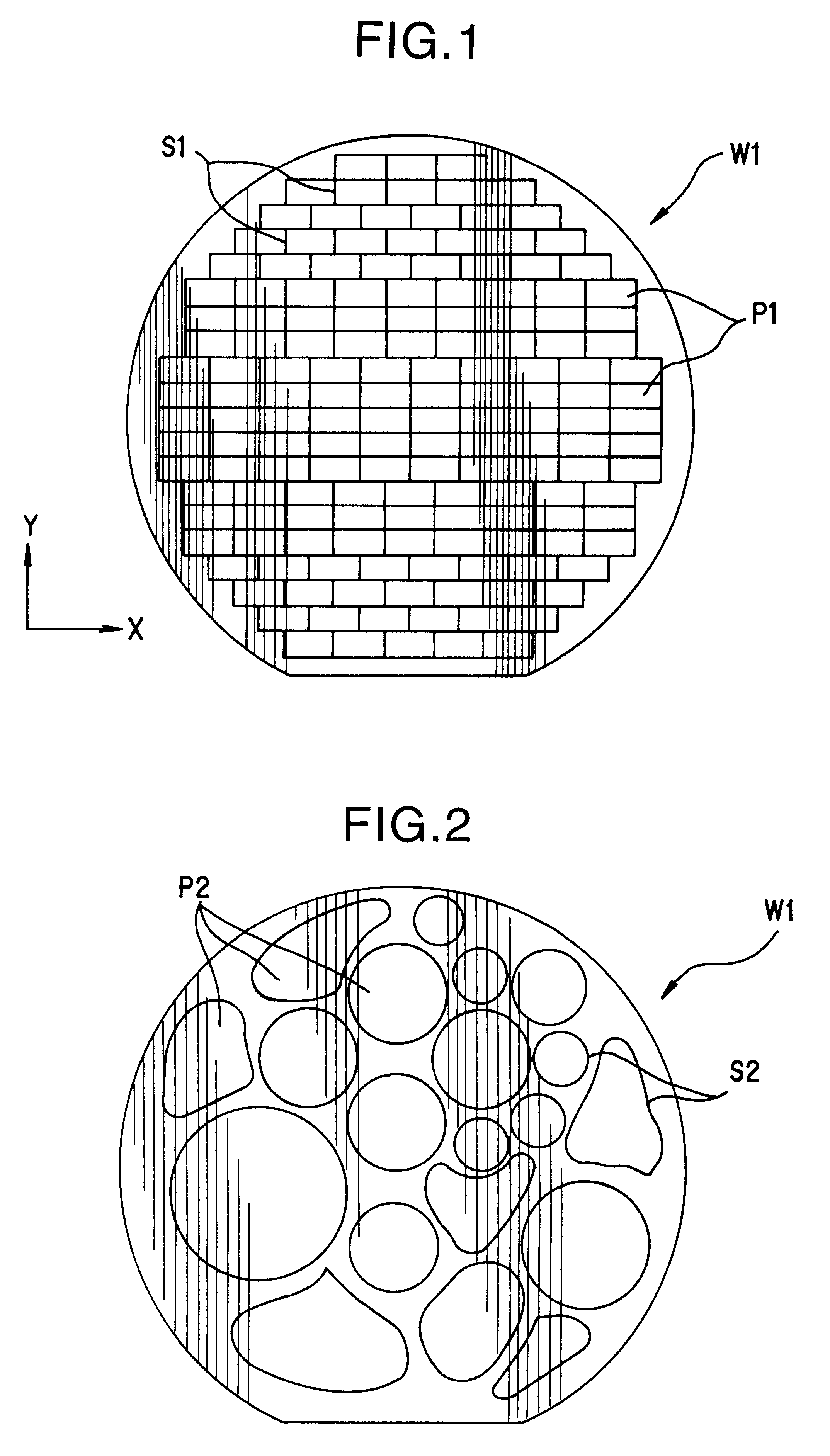Semiconductor wafer having regular or irregular chip pattern and dicing method for the same
a technology of semiconductor wafers and chip patterns, applied in the field of semiconductor wafers, can solve the problems of significant amount of remaining material left to be discarded, difficult to avoid the waste of semiconductor materials,
- Summary
- Abstract
- Description
- Claims
- Application Information
AI Technical Summary
Problems solved by technology
Method used
Image
Examples
second embodiment
Referring to FIG. 2, a semiconductor wafer W2 has a plurality of chip areas P2 of circles and irregular curved shapes formed thereon. These chip areas P2 have streets S2 running therebetween.
third embodiment
Referring to FIG. 3, a semiconductor wafer W3 has a plurality of chip areas P3 of rectangular and irregular polygonal shapes formed thereon. These chip areas P3 have streets S3 running therebetween.
fourth embodiment
Referring to FIG. 4, a semiconductor wafer W4 has a plurality of chip areas P4 of rectangular and square shapes of different sizes arranged closely to each other. These chip areas P4 have line segment streets S4 running therebetween. As is the case with the staggered-lattice pattern as shown in FIG. 1, the longitudinal streets S4 of sub-arrangements of chip areas are staggered laterally in the X-axial direction. The lateral streets of the sub-arrangement of square chip areas are separated a distance twice as long as that in each sub-arrangement of rectangular chip areas in the Y-axial direction.
As seen from FIGS. 1 to 4, in every semiconductor wafer chip areas are so arranged as to make full use of the whole area of the semiconductor wafer, minimizing the waste of semiconductor material. Thus, the number of chips per wafer can be increased 5 to 10 or more percent.
Chip areas of different sizes and shapes can be formed on semiconductor wafer by transferring desired shapes thereon wit...
PUM
 Login to View More
Login to View More Abstract
Description
Claims
Application Information
 Login to View More
Login to View More - R&D
- Intellectual Property
- Life Sciences
- Materials
- Tech Scout
- Unparalleled Data Quality
- Higher Quality Content
- 60% Fewer Hallucinations
Browse by: Latest US Patents, China's latest patents, Technical Efficacy Thesaurus, Application Domain, Technology Topic, Popular Technical Reports.
© 2025 PatSnap. All rights reserved.Legal|Privacy policy|Modern Slavery Act Transparency Statement|Sitemap|About US| Contact US: help@patsnap.com



